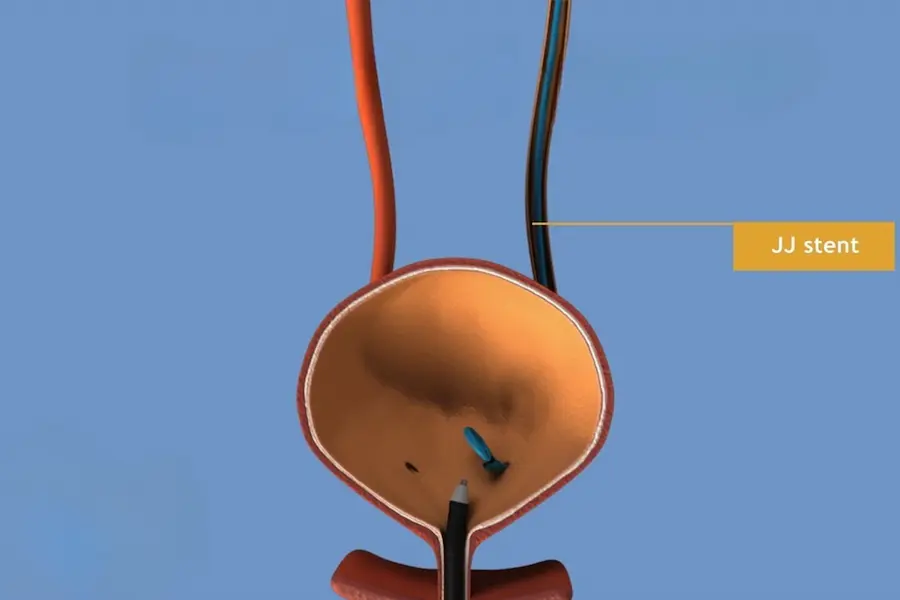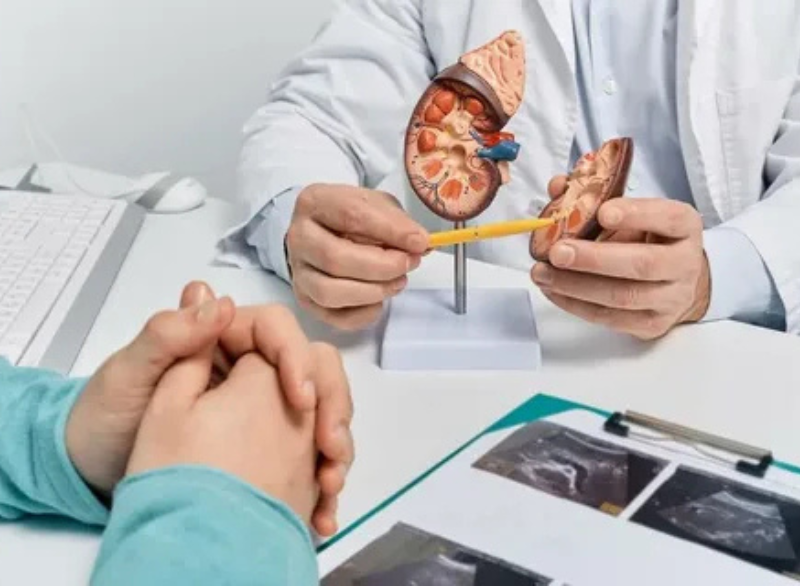Kidney Stone DJ Stenting
DJ (Double J) stenting is a temporary procedure used to relieve obstruction or assist urine drainage in patients with kidney stones. It helps prevent complications and supports healing after or during stone treatment.
- Home
- Service
- Kidney Stone DJ Stenting

Description
When a kidney stone blocks the normal flow of urine from the kidney to the bladder, it can cause pain, infection, and kidney damage. A DJ stent is a soft, flexible tube inserted into the ureter to bypass the blockage, ensuring uninterrupted urine flow. It is called a “Double J” stent because both ends are curled—one in the kidney and one in the bladder—to keep it securely in place.
DJ stenting is commonly done before or after stone removal procedures such as URS (ureteroscopy), PCNL, or ESWL. It is usually placed under local or general anesthesia using a cystoscope. Patients can resume most daily activities with the stent in place, though they may experience mild urinary symptoms. The stent is typically removed after 1–6 weeks, once healing or stone clearance is complete.
DJ stenting is commonly done before or after stone removal procedures such as URS (ureteroscopy), PCNL, or ESWL. It is usually placed under local or general anesthesia using a cystoscope. Patients can resume most daily activities with the stent in place, though they may experience mild urinary symptoms. The stent is typically removed after 1–6 weeks, once healing or stone clearance is complete.
Conditions Treated
- Kidney stone blocking urine flow
- Ureteric injury or swelling due to stone
- Infection risk due to obstructed kidney
- Pre-procedure preparation for URS/PCNL
- Residual stone fragments needing additional clearance
Tests and Treatments Offered
- Ultrasound KUB
- X-Ray or CT KUB
- Urine Culture and Blood Tests
- Cystoscopy-Guided DJ Stent Placement
- Post-Stenting Pain Management
- Planned Follow-up for Stent Removal
Special Offer on kidney Stone DJ Stenting
Actual Price
₹35,000
₹27,000/- Only
Estimated Stay: 1 Day
Book Appointment
How it works
Procedure and Process Treatment

Pre-Stenting Evaluation
Imaging and lab tests are done to evaluate the obstruction and check for infection.

DJ Stent Placement
Under anesthesia, a cystoscope is passed through the urethra and a DJ stent is inserted into the ureter.

Post-Procedure Observation
Patient is monitored briefly and discharged with advice on fluid intake and medications.

Stent in Place Until Planned Removal
The stent stays in place for 1–6 weeks and is later removed via a simple outpatient procedure.

Supporting Your Recovery—From Inside Out
DJ stenting plays a crucial role in managing kidney stones safely, relieving pain, and preventing damage. It’s a bridge to complete recovery, helping your urinary system function smoothly during and after treatment.
Frequently Asked Questions
Important questions patients ask before DJ stenting:
Some patients may notice increased urgency or mild discomfort during urination, but many tolerate it well.
Yes, most people can continue daily routines, though heavy physical activity should be avoided.
Prolonged stent use can lead to infection, encrustation, or blockage. Always follow the doctor’s timeline for timely removal.


